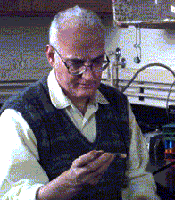George Carroll

- Email: gcarroll@uoregon.edu
-
Emeritus
- Office:
- Phone:
- Lab:
- Lab phone:
- Lab Website
Research Interests
Symbiotic associations, in which two or more organisms live in intimate contact, are now recognized to be extremely common throughout the biological world. I work with a group of microfungi, termed fungal endophytes, which live completely asymptomatically within leaves and stems of healthy plants. At the moment the following general questions about these associations interest me.
Using hierarchical sampling schemes, how is the variance in fungal infection frequencies partitioned among leaves within plants, among plants at a given site and among sites in a given habitat? Do fungal endophytes play a role in deterring herbivory and thus function as mutualists? Have fungal endophytes evolved in parallel with their hosts?
How can we explain the nearly ubiquitous presence of wood-decomposing Ascomycetes as endophytes in leaves of plants where the active phases of the fungi are never seen?
Selected Publications
Carroll, G.C. 1992. Fungal Mutualism. In The Fungal Community. Eds. G.C. Carroll and D.T. Wicklow, 327-354. New York: Marcel Denker, Inc.
Carroll, G.C. 1995. Forest endophytes: pattern and process. Canadian Journal of Botany 73 (Suppl. 1): S1316-S1324.
Stone, J.K., Sherwood, M.A., and G.C. Carroll. 1996. Canopy microfungi: function and diversity. Northwest Science .70:37-45.
Carroll, G.C. 1997. Fungus/Plant Interactions – An Overview. In The Mycota, Vol 5A. Eds. G.C. Carroll and P. Tudzynski. Springer Verlag, Berlin, pp. 1-8.
Wilson, D. and G.C. Carroll. 1997 Avoidance of high-endophyte space by gall-forming insects. Ecology 78: 2153-2163.